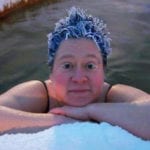 Movies and TV
Movies and TV  Movies and TV
Movies and TV  Creepy
Creepy 10 Lesser-Known Shapeshifter Legends from Around the World
 Animals
Animals 10 Amazing Animal Tales from the Ancient World
 Gaming
Gaming 10 Game Characters Everyone Hated Playing
 Books
Books 10 Famous Writers Who Were Hypocritical
 Humans
Humans 10 of the World’s Toughest Puzzles Solved in Record Time
 Mysteries
Mysteries 10 Scientific Mysteries We Don’t Fully Understand
 Weird Stuff
Weird Stuff 10 Celebrities Who Have Admitted to Alien Encounters
 Our World
Our World 10 Surprising Secrets of Notre Dame Cathedral
 Miscellaneous
Miscellaneous 10 Intriguing Origins of Popular Carnival Rides
 Movies and TV
Movies and TV 10 Actors Dragged out of Retirement for One Key Role
 Creepy
Creepy 10 Lesser-Known Shapeshifter Legends from Around the World
 Animals
Animals 10 Amazing Animal Tales from the Ancient World
Who's Behind Listverse?

Jamie Frater
Head Editor
Jamie founded Listverse due to an insatiable desire to share fascinating, obscure, and bizarre facts. He has been a guest speaker on numerous national radio and television stations and is a five time published author.
More About Us Gaming
Gaming 10 Game Characters Everyone Hated Playing
 Books
Books 10 Famous Writers Who Were Hypocritical
 Humans
Humans 10 of the World’s Toughest Puzzles Solved in Record Time
 Mysteries
Mysteries 10 Scientific Mysteries We Don’t Fully Understand
 Weird Stuff
Weird Stuff 10 Celebrities Who Have Admitted to Alien Encounters
 Our World
Our World 10 Surprising Secrets of Notre Dame Cathedral
 Miscellaneous
Miscellaneous 10 Intriguing Origins of Popular Carnival Rides
10 Facts About Body Hair That Will Make You Sick
Body hair. You know, I don’t know why we have such a problem with body hair in our society. Yeah, it looks a little weird. We don’t necessarily like it under our armpits—unless you’re a guy, then we consider it acceptable (even though it still looks like you’re holding a tribble under there). In other words, we hate on body hair for all the wrong reasons. So let me give you all the right reasons.
Here are ten facts about body hair that will make you sick (or maybe a little freaked out).
Related: 10 Weird Ways Human Hair Has Been Used
10 Sexy Beard Facts
If you listen closely in a sound-proof room, you can hear your hair growing at night. Okay, no, that’s a complete lie. But the actual truth is that your hair is the fastest-growing tissue in your body, second to bone marrow (’cause blood cells are more important than hair). That isn’t that strange, I know, but this one is.
If you’re looking for a long, luscious beard, perhaps have more sex.
When you anticipate sex, essentially when you release more testosterone, your hair follicles get the message that it’s time to work harder (no jokes, please). So while you, uh, have fun, your beard is growing faster than it ever has before!
9 Dandruff is a Fungus
There’s a fungus among-us, and it’s on your scalp.
The fungus is scientifically called Malassezia Globosa and is part of the yeast family. Most newborns are born with the yeast on their scalp, but it exists without causing any problems for the most part. But sometimes the yeast goes deep follicle diving and decides to live there… rent-free. And that’s how you get dandruff!
Dandruff causes the dead skin cells to push to the surface faster than average. Your body can’t shed the dead skin cells in time. There actually is no cure for dandruff, but you can use certain products to help alleviate it. Look for shampoos that have Zinc Pyrithione which treats the inflammation dandruff causes.
8 You’re Going Gray for a Reason
Okay, this fact won’t make you sick, but it may make you consider your lifestyle. You know how parents complain that their kids are making them go gray? They aren’t wrong. Stress (and age) can cause lower pigment production in the hair follicle and therefore, gray hair. But at least you can give gray hair a cool name.
The scientific term for gray hair is called canities.
Another reason why you may be experiencing some gray hairs here and there is because your hair is bleaching itself from the inside out. You know how people used to bleach their hair using hydrogen peroxide? Well, when your hair builds up too much hydrogen peroxide, it’ll bleach itself.
But wait, there’s more!
It’s not just the head on your hair that turns gray. Your hair turns gray everywhere…everywhere.
7 The Best Mop for Oil Spills
Hair is naturally hydrophobic, meaning it repels water. However, it is a lipophilic material, meaning that it loves to soak up some oil. In fact, hair does such a great job at absorbing oil that people will use it to clean up oil spills. Consider this the next time you share a hat or helmet…you may be picking up someone else’s oils.
Anyway (don’t share hats, kids).
This isn’t one of those hypothetical facts. It actually does happen and has been since the late 1980s. Most recently, in 2020, an oil spill off the coast of Mauritius leaked 1,000 metric tons of oil into the Indian Ocean. Salons all over Mauritius cut and donated hair to provide eco-friendly material for the clean-up.
6 Hair, Teeth, Nails, Skin, They’re All Made of the Same Thing
Hair is made up of the very special protein keratin. Keratin is also what our teeth, nails, and outer layer of skin are made from. (This is why one woman is growing fingernails from her hair follicles.) Keratin is like other proteins in the body which are made up of amino acids. It’s also found in an animal’s hooves, claws, beaks, horns, feathers, and tail.
Some of you of may be like, “Oh, that’s the special shampoo I use. It’s keratin shampoo!” It’s not just a marketing scheme. Manufacturers purposefully add keratin proteins to the shampoo to coat the cuticle of your hair. The idea is to make a stronger hair less prone to frizzing and breakage. You do need to use the shampoo consistently if you want to see results, however. This is because the keratin needs to build up a layer around the hair.
Finally, now I can look like a hair model!
5 It’s Dead, Jim.
Your hair is dead. Yeah, you’ve got a dead thing living on your head, and it’s not a bad toupee. The only living part of your hair resides within the follicle. The follicle provides the root of your hair with the blood supply it needs to stay alive. But once the hair cells grow out, those cells are good as dead. If you were to look at a hair strand underneath a microscope, you’d see layers of dead cells, overlapping each other like shingles.
Also, when you’re dead, so is your hair. Contrary to popular myth, your hair doesn’t keep growing once you die.
4 A Witch’s Brew Will “Do”
You think putting egg whites and avocado in your hair as a treatment is gross? Wait for this one.
One 16th century physician swore he could make hair grow back by using a mixture of boiled slugs, emerald oil, honey, saffron, soap, and cumin. No, you don’t drink it, silly. You rub it all over your scalp. Not sure if he really saw results or not.
Also, in 16th century there was one recipe for hair removal that consisted of cat poop and vinegar and another of boiling arsenic and quicklime. But the earliest form of chemical removal of hair dates back to the ancient Turks. They used a mixture called rumsa. It consisted of yellow sulfate or arsenic, quicklime, and rosewater.
I’ll just be hairy, thanks.
3 You’ve Got Something Crawling Around, There
Remember when we said that your hair is dead? Yeah, okay, that’s still true, but you’ve got something pretty darn alive co-existing with that dead hair. Outside of whatever you may have picked up doing whatever you do in your free time, you have mites living in your hair follicles.
Demodex folliculorum lives in the hair follicle and lives off of your dead skin. Like the fish flakes you give your fish, but human dead skin cells. They also feed on oils, hormones, and other fluids around the hair follicles. You’ll most likely find these mites living on your face, in particular your eyelashes. They can cause issues if there you have an infestation of them (gross), but for the most part, we just play host.
A single hair follicle can hold up to a family of 25 mites and that’s just about as many, if not more, eggs a female Demodex can lay in your hair follicle. They can contribute to problems like acne, hair loss, rosacea, dermatosis, rash, and other skin conditions. Elderly people, people with cancer or compromised immune conditions such as HIV/AIDS, and those experiencing extreme stress are particularly susceptible to a mite’s potential noxious effects.
I haven’t told you how you can spread these mites yet. You spread them by direct contact or by eggs that are contained in dust (dead skill cells and hair in dust).
2 The Life Cycle of a Hair
Humans are the only species that need to cut their hair regularly because human hair growth and shedding happen at random. We don’t exist like other wild mammals, with perfectly trimmed fur and whatnot. No, if we let our body hair grow we’ll look like a wet cat before its Sunday bath.
This is because human hair grows cyclically. There are three stages to hair growth and shedding: anagen, catagen, and telogen. Depending on the location, it’ll grow to a specific length, chill there for a while, and then shed. When this happens, a new hair replaces that one. During this phase, the hair will grow 1 cm every 28 days. A single hair can live up to five years
1 You Don’t Have Pubic Hair on Your Face But…
Well, actually, you sort of do?
Pubic, armpit, and facial hair are all the same kinds of hair: terminal hair. Terminal hair starts as fine and soft hair, but then becomes coarser and thicker once you hit puberty. The hair follicle also develops a sebaceous gland, or sweat gland (why your armpits are sweaty). The sebaceous glands in pubic hair (named that because the hair grows over your pubis, or pubic bone) are smaller than the ones on your face.
All of these facts don’t make terminal hair gross, just mature (unlike the fact that we’re suggesting your beard is actually pubic hair).







